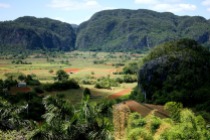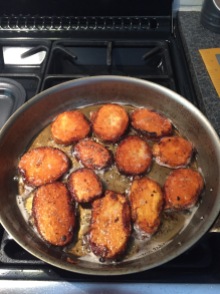The largest island in the Caribbean is noted for it’s historic heritage, beautiful beaches, a missile crisis, cigars and rum. Discovered in 1492 by Christopher Colombus, it became a hub for the slave trade and the export of sugar and coffee. By the mid 1800s sugar plantations were satisfying a third of world demand.
The Republic of Cuba encompasses more than 4,000 islands and cays and is located in the northern Caribbean Sea at the confluence with the Gulf of Mexico and the Atlantic Ocean. The average temperature is 21°C (69.8 °F) in January and 27°C (80.6 °F) in July. Protected natural areas make up nearly 22% of Cuban territory, providing habitats for crocodiles, flamingos, orchids among others.
Fidel Castro seized power in Cuba on February 16, 1959 and remained until he announced his resignation, due to bad health, in February 2008. In March 1960, Eisenhower gave his approval to a CIA plan to arm and train a group of Cuban refugees to overthrow the Castro regime. The invasion (known as the Bay of Pigs Invasion) took place on April 14, 1961. About 1,400 Cuban exiles disembarked at the Bay of Pigs, but failed in their attempt to overthrow Castro. Since 1965, the country has been governed by the Communist Party of Cuba and it is one of the world’s last remaining socialist countries following the Marxist-Leninist ideology.
A few interesting facts:
Only 5% of Cubans actually have access to the uncensored, open Internet.
The US pays Cuba $4,085 a month in rent for the controversial Guantanamo Bay Naval Base. Cuba has never cashed the checks.
Cuba is one of two countries where the sale of Coca-Cola is prohibited (the other is North Korea).
Cuba possesses one of the best health care systems anywhere in the world with the highest doctor-to-population ratio of any country in the world.
Christmas did not become an official holiday in Cuba until 1997.
Cuba is full of US cars from the 1950s. This is because they’re the only cars Cuban citizens can legally own. Only pre 1959 cards that were seized from their original owners can be privately owned and worked on. All newer cars are owned by the government.
2.7 Million international tourists visited Cuba in 2011, the third highest in the Caribbean. It’s highlights include the UNESCO cities of Havana, Trinidad, Cienfuegos and Camagüey, Playa Sirena beach, Havana’s Capitolio Nacional building and Parque Nacional Viñales to name a few.
Some popular Cuban dishes I came across; Boliche (beef roast stuffed with chorizo sausages), Ropa Vieja (braised beef with tomato sauce) , Malanga Fritters, Cuban black bean soup and Mixto (cuban sandwich). As we had company (who had visited Cuba), I opted to cook a feast of Pernil Relleno con Moros y Cristianos (Pork shoulder stuffed with black beans stewed with white rice). It was a bit of an effort but it went down very well with our guests. I served it with a green salad of leaves, avocado, asparagus tips and broad beans.
Rating: 8/10
Serves: 6 – 7
Prep time: 30 mins + overnight marinating
Cook time: 6 hours
For the stuffed pork
whole pork shoulder, boned and opened out
1 cup olive oil
1/4 cup orange juice
1/4 cup fresh lemon juice
10 garlic cloves, chopped
1/2 tsp oregano
salt and freshly ground black pepper
For the moros y cristianos
1 tin of black beans
2 tbsp vegetable oil
4 cloves of fresh garlic, minced
1/2 small green pepper, minced
1/2 white onion, minced
2 cups white rice, long-grain
1/2 cup fresh squeezed lime juice
salt and fresh ground pepper
For the stuffed pork
In small bowl, combine oil, orange juice, lemon juice, garlic, oregano, and salt and pepper. Let stand for 1 hour.
Coat the inside of the pork with marinade and refrigerate for at least 2 hours.
Preheat oven to 220°C.
Spread Moros y Cristianos down the middle of meat and fold to fully cover stuffing. Tie with a string both lengthwise and across.
Place in a roasting tray with 2 cups of water and roast for 6 hours, checking it isn’t getting too black.
For the moros y cristianos
Add the vegetable oil to a saucepan and sauté the garlic, pepper and onion for 5 minutes until they soften.
Stir in the black beans and rice, and add 4 cups of water.
Bring the mixture to a boil, then reduce the heat to a simmer and cook until the rice is tender, approximately 20 minutes.
Stir frequently and check to see if you need additional water to keep the rice from sticking. Add more if needed but don’t let it get too mushy.
Once the rice is fully cooked, add the lime juice and salt and pepper.







































